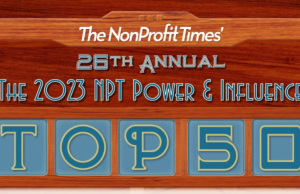Nonprofit news media grew at its fastest pace since the financial crisis of 2008, accompanied by growth across the board individual giving at all levels, including more first-time donors than ever before.
One-third of nonprofit news outlets publishing today did not exist five years ago. Nonprofit outlets have launched at an average pace of a dozen or more a year since 2008, with at least 20 launching every year for the past four. INN saw its membership grew 27% from 2019 to 2020.
The Los Angeles-based Institute for Nonprofit News (INN) issued its 2021 Index this month, titled “The State of Nonprofit News: Rising to new challenges and public needs in a crisis year.” The 18-page report compiles responses to an online survey distributed in January to its 284 member newsrooms; 268 completed the survey. Respondents that were excluded from the financial analysis were 24 public broadcasters, which do not break out news revenue and expenses in a comparable way, and 20 startups that have been in operation less than a year.
Almost half of revenue comes from foundations (47%) with a little more than one-third (36%) from individual giving, and another 14% from earned revenue. Nearly two-thirds of news nonprofits had increases in individual giving during 2020; for about half of those outlets the bump was more than 50%. Median revenue from individual giving grew by 41%, increasing to $118,000.
INN members attribute individual giving growth to “successful calls-to-action to their audiences and donor network, where outlets showcased their unique value during the pandemic and made appeals for financial support,” according to the report. “Foundations also issued emergency grants, some giving outlets funds for new coverage and remote- work needs.”
The majority of individual giving (60%) comes from major donors ($5,000 or more), with almost a quarter from small-dollar donors (less than $1,000), and 7% from mid-range donors ($1,000 to $5,000). Members contributed about 9% of individual giving.
Most outlets increased revenue from major donors. About half of those that increased major donor revenue more than doubled it. The average number of major donors per outlet went from 8 to 10, according to the index.
The average contribution per major donor declined, from $47,000 in 2019 to $34,000 in 2020, and the median major donor revenue per outlet declined by 21%. “Fieldwide declines in major giving were largely due to losses experienced by older, national and global outlets,” according to the report. “We believe that new, first-time major donors offset some of the losses of gifts from existing major donors that needed to retrench for a year.”
Where major gifts increased, publishers attribute factors including board members giving additional contributions, development teams leveraging wealth screening services, and first-time contributors. Major donors account for 2,052 of the total donors and $69 million of the total $109 million, for an average donation of $33,635.
Only about 8% of news organizations reported securing planned giving commitments in 2020, which the report identified as one area for major donor growth, “with an opportunity for more training and coaching on how to set up and run planned giving campaigns.”
Mid-level donors tallied 6,311 of the 332,176 total, and $8 million of the $109 million in all, for an average $1,262.
The majority of nonprofit news outlets saw small-dollar contributions grow, with average donations per outlet rising from $78,000 in 2019 to $115,000 in 2020. The number of people who gave a nonprofit news outlet a small-dollar contribution jumped by almost 50% from 2019 to 2020, from an average 846 small-dollar donors per outlet in 2019 to more than 1,200 last year. The average amount of a small-dollar donation held steady at about $90. Small donors comprised 274,145 of the total 332,176 donors, and $25 million of the total dollars for an average $91, which held steady from 2019.
INN members attribute a few factors to small-dollar revenue increases, including new unique campaigns around COVID that brought in first-time contributions. Other outlets noticed more donors coming in during pre-existing, end-of-year appeals.










